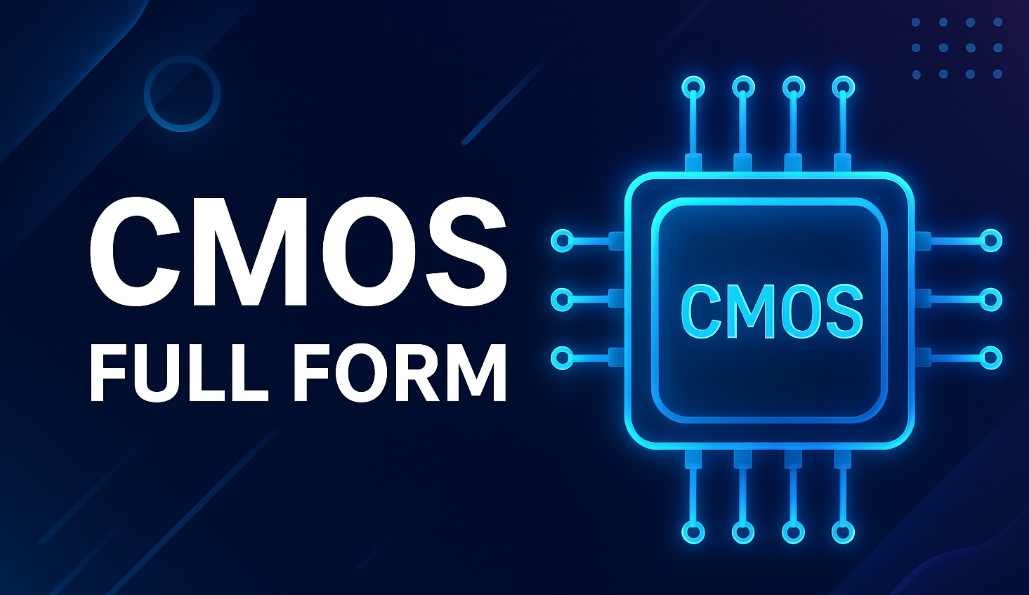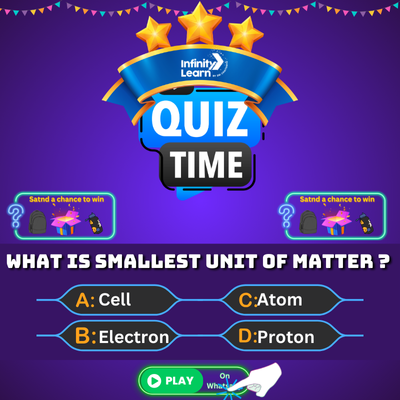Table of Contents
Robert Noyce and Jean Hoerni invented CMOS in the 1960s. Noyce, co-founder of Intel, played an important role in developing the microprocessor. Hence, he is known as the “father of the microchip.” While Hoerni was a Swiss born scientist, he had also made significant contributions in the field of physics and the planar process. This process has also revolutionised the production of integrated circuits.

CMOS Full Form
CMOS Full Form is Complementary Metal-Oxide-Semiconductor. It uses a battery to power a chip placed on the circuit board, storing key startup data that the BIOS reads during booting. The term “complementary” means it uses either PMOS or NMOS transistors, one at a time for efficient operation. CMOS uses very little power because it holds charge for long periods and only uses energy when switching states.
Why Use CMOS?
CMOS is used because it consumes very low power, works efficiently, and generates less heat. It is ideal for modern electronics that need fast performance, long battery life, and small-sized components.
- CMOS saves energy in phones and laptops and increases the battery life. Since, it uses power only when it switches.
- CMOS can switch electrical signals very fast. This high speed makes it ideal for use in microchips, processors, and memory units.
- The chip uses very little power and therefore it produces very less heat. Hence, it does not require big cooking fans.
- CMOS is made using very tiny components. It helps engineers to create compact and lightweight devices that perform quickly and efficiently.
Do Check: List of all Important Full Forms
Who is the inventor of CMOS?
The CMOS technology was invented by Frank Wanlass in 1963. While working at Fairchild Semiconductor, Wanlass came up with the concept of combining PMOS and NMOS transistors in one circuit. This invention was a breakthrough in electronics. It helped to create low-power, high-speed chips used in computers, smartphones, and many other digital devices.
How does CMOS work?
CMOS works by using both PMOS and NMOS transistors to control the flow of electricity in a circuit. When one transistor is on, the other is off. This helps the circuit use power only when switching between on and off states. Hence, CMOS uses very little energy, and thus it is commonly used in memory chips and digital logic circuits. CMOS also works with a small battery to keep important system settings saved when the computer is turned off.
Major Application of CMOS
CMOS technology is widely used in modern electronics for several reasons. It plays an important role in many devices we use every day.
- Microprocessors: Microprocessors are the brain of computers and smartphones that use CMOS technology. These chips handle all major calculations and instructions. CMOS makes devices fast, compact, and energy-efficient. This helps modern electronics run smoothly without getting too hot.
- Microcontrollers: CMOS-based microcontrollers are used in smart devices like microwaves, washing machines, and remote controls. They help machines follow commands and do tasks automatically. These microcontrollers use very little power and help devices last longer and work efficiently.
- Memory Devices: CMOS is used in memory chips such as Static RAM (SRAM), ROM, and Flash memory. These memory units are vital to store system data, user files, and software applications. CMOS memory is fast and helps to improve battery life in portable devices like mobile phones and tablets.
- Image Sensors: Digital cameras, smartphones, webcams, CCTV systems, and medical imaging devices all use CMOS image sensors. These sensors convert light into digital signals to create high-quality pictures and videos. These are energy savers and are widely used for their low cost and small size.
- Digital Logic Circuits: CMOS is widely used to build digital logic circuits such as logic gates, flip-flops, and counters. These circuits are present in nearly all digital devices. They help perform tasks, make decisions, and control operations. CMOS makes them faster, more efficient, and uses very little power.
- Wearable Devices: CMOS chips are ideal for wearable technology like fitness bands, smartwatches, and health trackers. These devices track heart rate, your everyday step count, and sleep schedule. Therefore, they require compact and low power batteries. CMOS helps ensure long battery life and accurate performance.
Also Check: BMT Full Form
Main Role of CMOS
CMOS stores important system settings like date, time, and hardware configuration. It works even when the computer is turned off, using a small battery to keep the settings safe and ready for startup.
- CMOS keeps system configuration details such as boot order, CPU settings, and memory details.
- It ensures the system clock runs correctly, even when the computer is off.
- CMOS helps the BIOS recognize hardware components during system startup.
- CMOS stores important data needed for the system to start correctly.
- A small battery keeps this data safe even when the computer is turned off or unplugged.
Are CMOS batteries researchable?
Most CMOS batteries are non-rechargeable lithium coin cells, typically the CR2032 type. They are designed to provide a small, steady voltage to keep the BIOS/CMOS memory running when the computer is powered off.
Does this virus affect CMOS?
A computer virus does not directly affect CMOS hardware, but it can sometimes interfere with CMOS settings or BIOS configurations in rare cases.
- CMOS stores BIOS settings, like boot order, time/date, and hardware settings.
- A virus with deep system access might try to modify or corrupt BIOS/CMOS settings, but this is rare and usually requires high-level access.
- Most modern systems have protections like UEFI, secure boot, and write-protection, making such attacks very difficult.
Don’t Miss – CPU Full Form
Types of MOSFETs
PMOS and NMOS are two types of transistors that use different semiconductor materials. Earlier, electronic devices used PMOS and NMOS separately, but NMOS became more popular due to its speed and low cost. However, NMOS had high static power consumption. CMOS solved this by combining both PMOS and NMOS in a single IC.
This design uses less power, reduces noise, and allows faster switching. CMOS is now widely used in microprocessors, microcontrollers, image sensors, and RAM. It is preferred because it saves power, reduces heat, and supports efficient circuit design, making it dominant in the electronics industry today.
Power Consumption By CMOS
CMOS uses very little power compared to other types of circuits. It only uses power when the circuit is working or changing its state. However, when not in use, the conductor does not use any power. This makes CMOS good for devices like laptops, mobile phones, and watches. The batteries last longer, and the device does not get too hot because of its low power use. This is one big reason why CMOS is used in modern electronics.
CMOS Temperature Range
CMOS stands for Complementary Metal-Oxide-Semiconductor. These chips are used in many electronic devices. They work best in a certain temperature range. For normal use, CMOS works well between 0°C to 70°C. The ideal temperature lies in the range of -40°C to 85°C for industrial use. The chip does not work properly if the temperature goes too high or too low. Keeping the device in the right temperature range helps it run safely and last longer.
CMOS Full Form FAQs
What is a metal oxide semiconductor?
A metal oxide semiconductor is a material used to control electricity in chips.
Why is CMOS called complementary?
CMOS is called complementary because it uses both PMOS and NMOS transistors.
Is CMOS a semiconductor?
Yes, CMOS is a type of semiconductor technology used to build chips for processors, memory, and other electronic devices.








